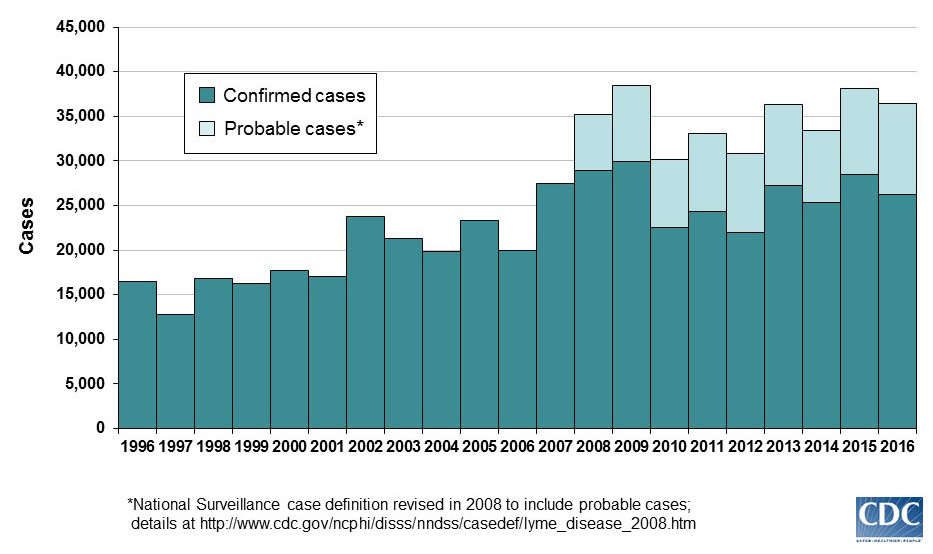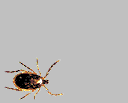| by Lynne Bleeker Science Teacher NFK Consultant |  |
| by Lynne Bleeker Science Teacher NFK Consultant |  |
 | Summer: school graduation, vacation, parades, and Lyme disease. What? Lyme disease? Yes, in some parts of the U.S., Lyme disease may be on people's minds as the weather warms up and people spend more time out of doors. What exactly is Lyme disease? How can you avoid getting it? Let's take a closer look at this disease. |
What is Lyme Disease?Lyme disease was first discovered in 1975 after a mysterious outbreak of arthritis in children who lived near Lyme, Connecticut. Lyme disease is an infectious disease (a disease caused by an outside agent) that affects the skin first, then the joints, the nervous system and, if untreated, eventually other organs. |  |
What causes Lyme Disease?Many people think that Lyme disease is caused by ticks. However, it is actually a disease caused by a bacterium called Borrelia burgdorferi. The bacteria is transmitted to humans via tick bites, so people associate ticks with Lyme disease. This way of disease transmission is a classic example of parasitology involving several organisms:
|  Borrelia burgdorferi Image courtesy of the NIAID |
How common is Lyme Disease?According to the U.S. Center for Disease Control (CDC), Lyme disease is the most common arthropod-borne disease in the U.S. More than 150,000 cases have been reported since 1982.
 Data from the CDC. |
 Image courtesy of the NIAID |
What are the symptoms of Lyme disease?Lyme disease is rather difficult to diagnose because many of its symptoms can occur with other diseases. Typically the first and most distinctive symptom of Lyme Disease is an expanding rash which usually radiates from the site of the tick bite. The rash usually appears 1-2 weeks after the tick bite. It may be accompanied by joint pains or general achiness, chills, fever and headache. Later there may be other rashes, a stiff neck, facial palsy similar to Bell's palsy, tingling or numbness in the extremities, headache, sore throat and severe fatigue. In the late stage of untreated Lyme disease, people may experience arthritis (pain/swelling) of one or two large joints, disabling neurological disorders such as disorientation, short term memory loss, mental "fog" and numbness in the hands or feet. |
What can you do to protect yourself from the disease? If
you live in or will be visiting an area where the bacterium
Borrelia burgdorferi is found in wild animals, it is wise to
take
precautions against tick bites. Deer ticks like to hide in dark shady
places such as moist ground litter in or near forests. They cannot jump
or fly, but crawl onto the skin of a potential host. Once they are on the
skin, they crawl up to dark protected areas such as the back of the knee,
the neck, armpits, ears, etc. They then begin to pierce the skin of the
host until they find a blood supply. If
you live in or will be visiting an area where the bacterium
Borrelia burgdorferi is found in wild animals, it is wise to
take
precautions against tick bites. Deer ticks like to hide in dark shady
places such as moist ground litter in or near forests. They cannot jump
or fly, but crawl onto the skin of a potential host. Once they are on the
skin, they crawl up to dark protected areas such as the back of the knee,
the neck, armpits, ears, etc. They then begin to pierce the skin of the
host until they find a blood supply.The best protection against Lyme disease is to avoid areas where ticks live and to check yourself for ticks after you have been outside. The good news is that even if you find a tick, if you remove it correctly before it has been there 24-36 hours (and its body is engorged with blood), you can greatly reduce your chances of getting the disease. According to the FDA and CDC, the best way to remove the tick is to use tweezers. Grasp the tick by its mouthparts where it enters your skin and pull steadily outward. DO NOT just squeeze the tick's body. Quick jerking motions and irritants may cause the head of the tick to stay inside your skin. Therefore, Lyme disease could be transmitted even after the tick's body has been removed. If you do come down with some of the symptoms, especially if you live in an area where there is not known to be a wild population of Borrelia burgdorferi, it would be wise to talk to your physician. Let him or her know where you have been travelling and what outdoor activities you have taken part in. |
How is Lyme Disease treated?The Centers for Disease and Control and the National Institute of Allergy and Infectious Disease recommend that people with Lyme disease should be treated with antibiotics, such as doxycyline or amoxicillin (other drugs can be used with people allergic to penicillin). Physicians, guided by a patient's response to antibiotics, may recommend a course of antibiotics lasting for several weeks. Research is also underway to develop a vaccine to prevent Lyme disease.
|
Chronic Lyme DiseaseSome people with Lyme disease have chronic symptoms that do not respond to medication. These symptoms include fatigue, memory loss, and joint pain (arthritis). The knee is the joint most commonly affected. In treated adults, approximately 10% have chronic joint inflammation for months or years following the infection. The reason for these chronic symptoms is not known. It is unclear whether these symptoms are caused by Lyme disease or by some other cause.
|
Did you know? |
|
|
For more information about Lyme disease, check out the following web
sites:
|
| BACK TO: | Neurological and Mental Disorders | Exploring the Nervous System | Table of Contents |
![[email]](./gif/menue.gif) Send E-mail |
![[newsletter]](./gif/menunew.gif) Get Newsletter |
![[search]](./gif/menusea.gif) Search Pages |
This page was updated on February 16, 2018.